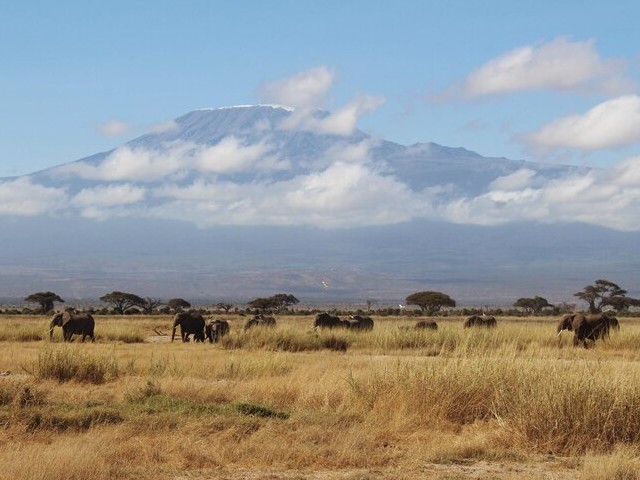How To Spot Wildlife In Kilimanjaro's Rainforest Zone
Embarking on a trek up the majestic slopes of Mount Kilimanjaro is not merely a journey through varying altitudes—it is a voyage through a tapestry of ecological systems, each weaving its unique pattern of flora and fauna. Among these, the lush rainforest zone, cloaked in mist and echoing with the calls of distant wildlife, offers an enchanting backdrop for nature enthusiasts. At Kilimanjaro Centre for Trekking and Ecotourism (KCTE), we understand the pulse of this vibrant ecosystem and are excited to guide you on how to spot and appreciate its hidden wildlife treasures.
The Enigmatic Rainforest Zone
Nestled between 1,800 and 2,800 meters, Kilimanjaro's rainforest zone is a verdant paradise teeming with life. As you meander through this dense greenery, every step unveils a new layer of nature's secrets. This area is crucial not only for the biodiversity it supports but also for the role it plays in maintaining the ecological balance of the region. Here's how you can maximize your chances of wildlife sightings in this mysterious woodland.
Understand the Habitat
To spot wildlife effectively, it's essential to understand the habitat. The rainforest of Kilimanjaro thrives with towering trees, draped in mosses and festooned with orchids. This dense canopy shelters various species while the forest floor tells its own story of survival and symbiosis. Recognizing the signs of animal life, such as tracks, marks on vegetation, and listening for sounds, increases your chances of a sighting.
Best Times for Wildlife Spotting
Timing is everything when it comes to wildlife spotting. Early morning or late afternoon, when the sun casts golden hues through the mist, are ideal. Animals are most active during these cooler parts of the day. Whether it's the rustling of leaves indicating a troop of Colobus monkeys or the distinctive call of a Turaco, these times provide the perfect backdrop for nature's symphony.
Gear Up
Equipping yourself with the right gear can enhance your wildlife spotting experience. A good pair of binoculars brings you closer to distant treetops, where many creatures camouflage. Wear comfortable, muted clothing to blend into the surroundings and tread softly, minimizing noise and disturbance.
Flora and Fauna to Discover
Birds of Beauty
Kilimanjaro's rainforest is a haven for bird watchers. From the dazzling Hartlaub's Turaco to the secretive African Green Pigeon, the diversity is astounding. Keep your eyes peeled for the flash of color amongst the greens as these avian inhabitants go about their daily routines.
Mammals in the Mist
The forest floor and lower branches might reveal the shyer residents of Kilimanjaro. Blue monkeys and the rarer Colobus monkeys can often be seen leaping through the canopy. Smaller mammals like the Kilimanjaro Mouse and the elusive Leopard also share this habitat, though spotting them might require patience and a bit of luck.
Lush Plant Life
While the fauna is thrilling, the flora of Kilimanjaro's rainforest is equally fascinating. The towering trees and diverse plant species not only support the wildlife but are also vital for the ecological health of the region. From the Impatiens Kilimanjari, a flower endemic to the mountain, to the strangler figs dominating the forest skyline, the plant life here is an essential part of the ecosystem's fabric.
Conservation Efforts
At KCTE, we are deeply committed to the conservation of Kilimanjaro's ecosystems. We encourage all trekkers to follow ethical wildlife watching practices. This includes keeping a respectful distance, refraining from feeding the animals, and adhering to established trails to minimize environmental impact. Your awareness and cooperation help ensure that these wonders persist for generations to come.
Join Us for an Unforgettable Adventure
Ready to explore the heart of Kilimanjaro's rainforest and meet its wild inhabitants? Kilimanjaro Centre for Trekking and Ecotourism offers expertly guided tours that promise not just a trek but a profound connection with nature. Our experienced guides are adept at spotting and interpreting wildlife signs, enhancing your journey every step of the way.
Why Choose KCTE?
With KCTE, you're choosing partners who are not only experienced but also passionate about Kilimanjaro and its conservation. We ensure that your trek is safe, enjoyable, and enlightening, helping you create memories that last a lifetime, all while respecting the natural beauty of our planet.
FAQs About Wildlife Spotting on Kilimanjaro
What kind of wildlife can I expect to see in the rainforest zone?
Expect to see a range of bird species, several primates including Colobus and blue monkeys, and with luck, larger mammals such as leopards.
Are there any safety concerns while wildlife watching?
While Kilimanjaro is generally safe, it's important to always follow the guidance of your KCTE guide to ensure your safety, especially when encountering wildlife.
How physically demanding is wildlife spotting on Kilimanjaro?
Wildlife spotting can be enjoyed as part of the trekking experience, which requires a moderate level of fitness. The pace is kept comfortable, and stops are frequent, making it accessible for most people.
Can I take photographs of the wildlife?
Yes, photography is encouraged, but flash should be avoided as it can startle and distress the animals.
Embark on this unique adventure with Kilimanjaro Centre for Trekking and Ecotourism, where the mystique of nature's untouched corners awaits your discovery. Let the vibrant life of Kilimanjaro's rainforest zone inspire your next exploration. Contact us today to book your trek and experience the wild side of the tallest freestanding mountain in the world!




